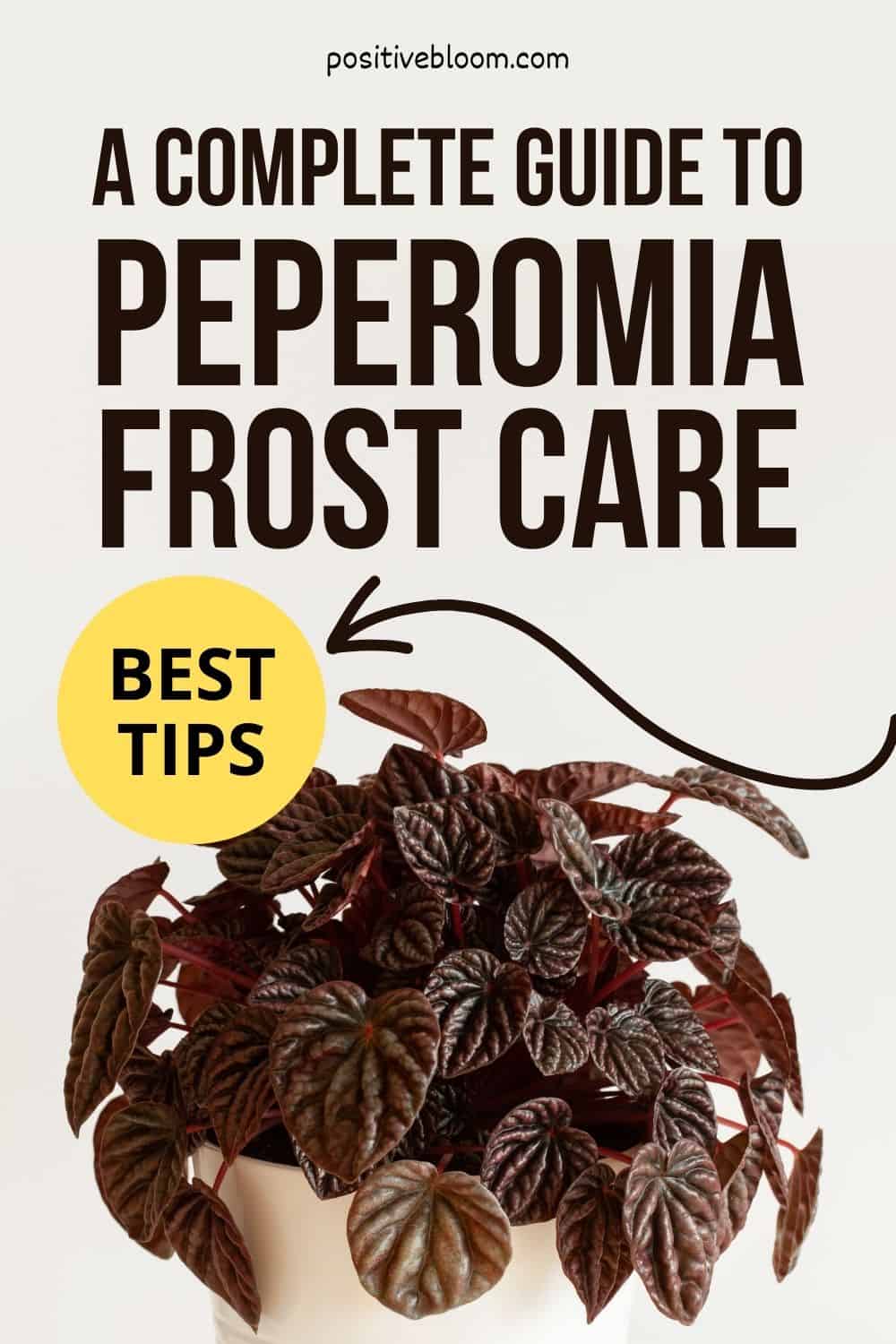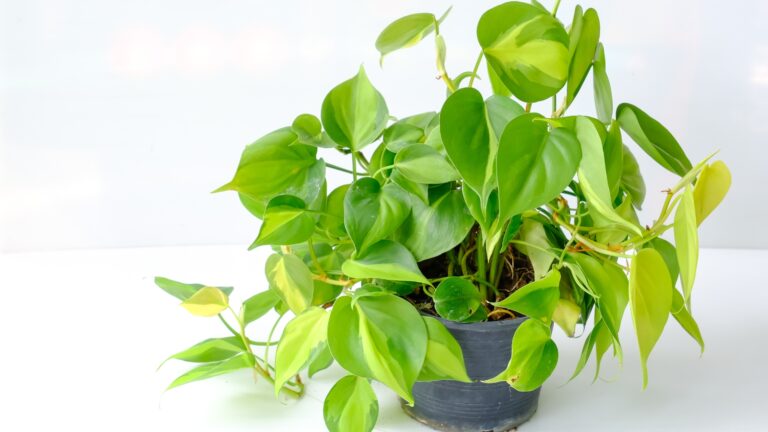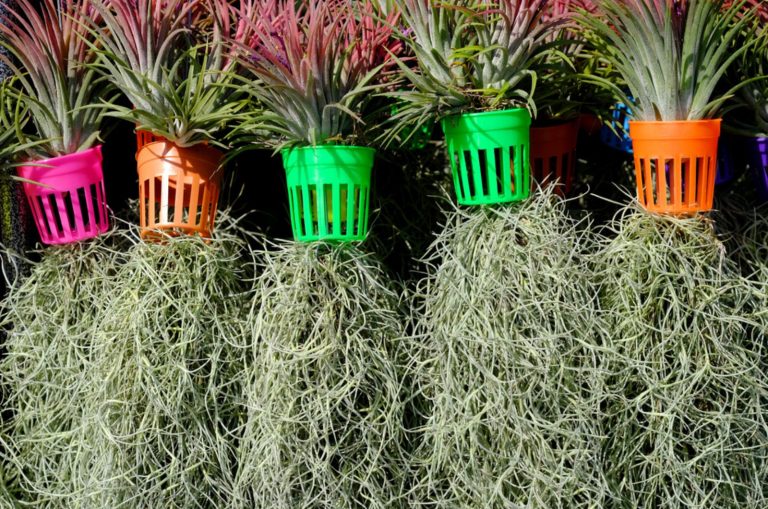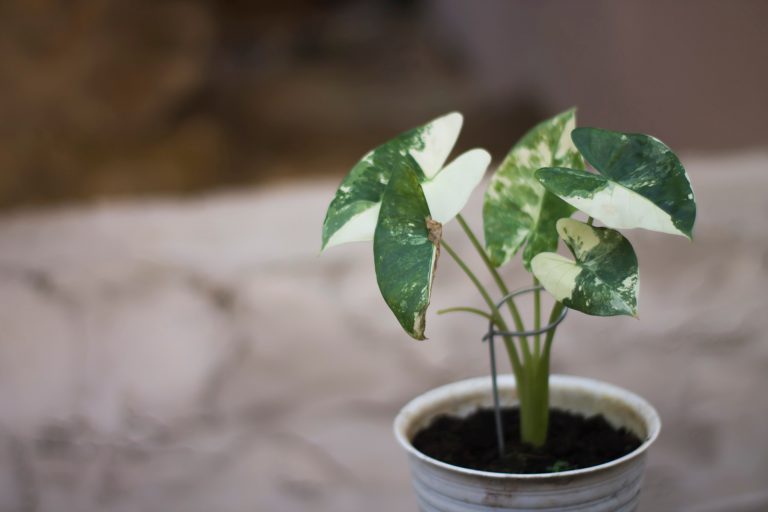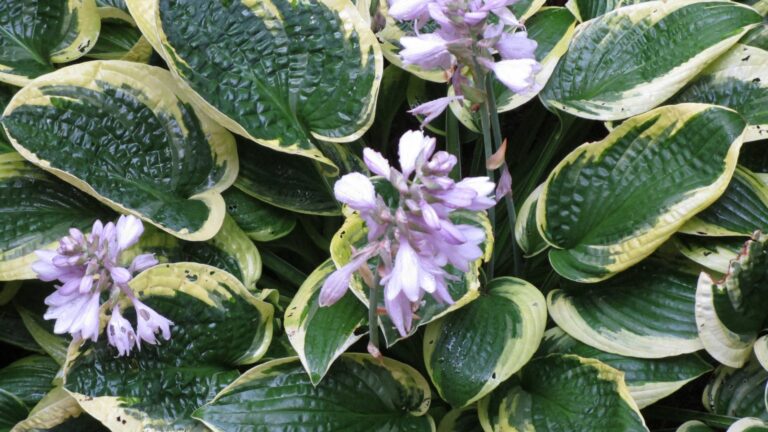A Complete Guide To Peperomia Frost Care: Best Tips
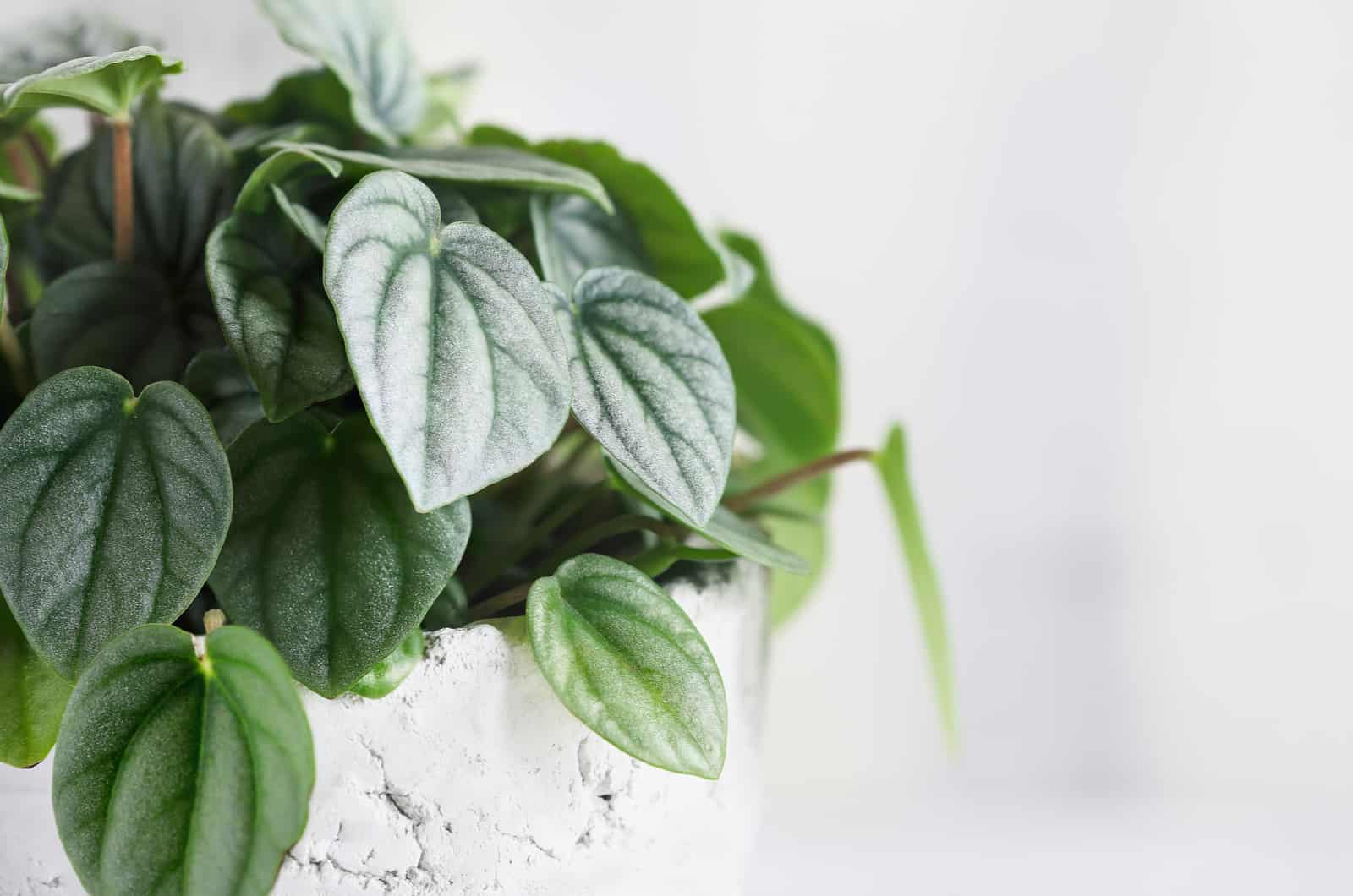
I’m sure that many growers decide on growing a peperomia frost because of its low-maintenance features.
Of course, the silver frosted leaves with dark green veins are the main reason why this peperomia cultivar became one of the most wanted houseplants.
Contrary to popular belief, peperomia frost care isn’t actually a piece of cake. Although it may seem easy to care for this peperomia plant, compared to the other most common houseplants, issues may still occur.
That’s why I decided to make a complete care guide for the peperomia frost.
The peperomia caperata frost is native to South America. This care guide contains tips for imitating these conditions in your home.
Let’s start!
Peperomia Frost Care
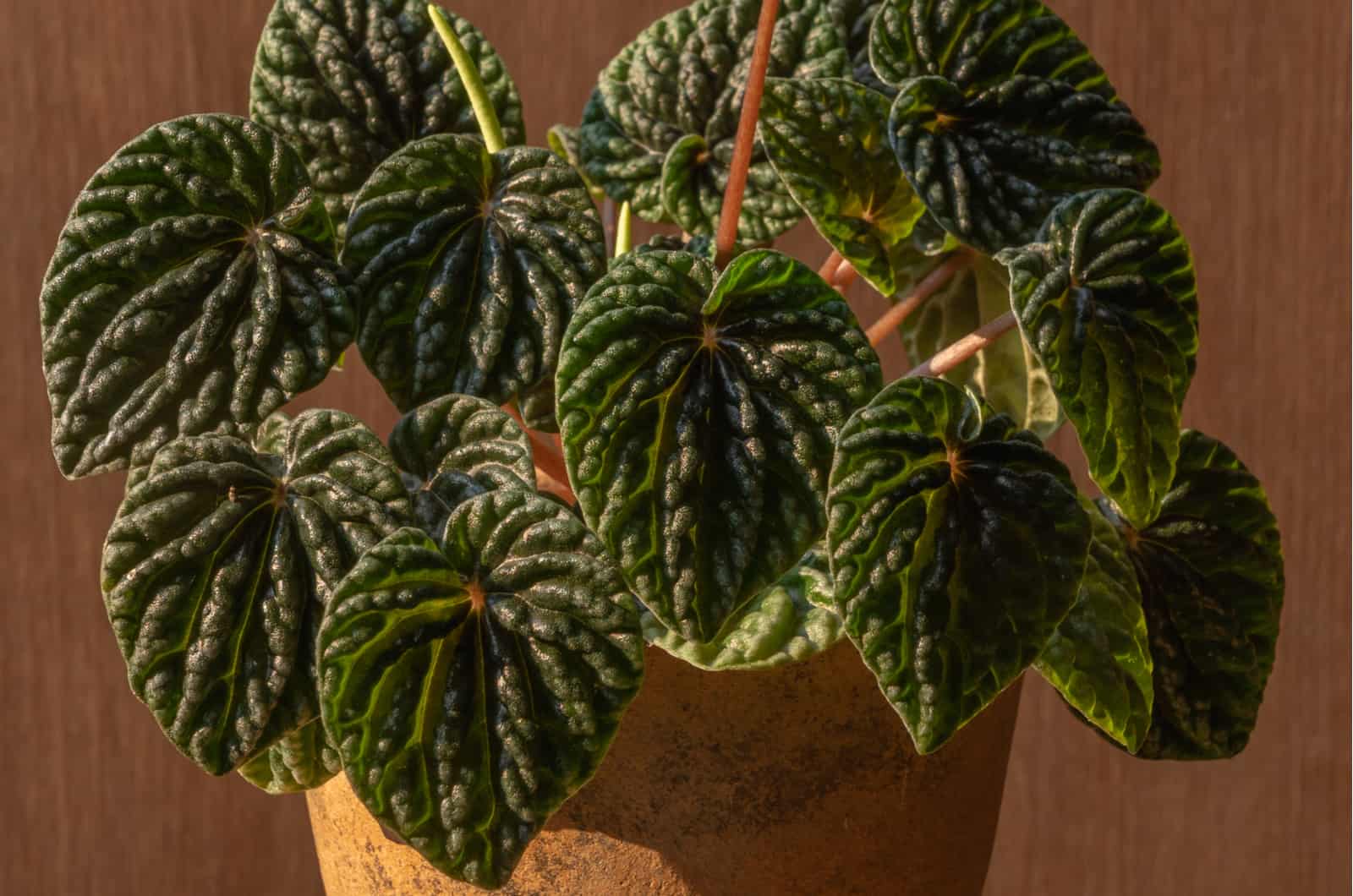
As mentioned, the frost peperomia originally grows in South America (Brazilian rainforests). If you decide to grow a peperomia plant as an indoor plant, do your best to imitate its natural habitat conditions.
Take a look at the table to see a quick guide.
[table id=135 /]Let’s get into the details!
Light Requirements
The Peperomia frost thrives in bright indirect light when grown as a houseplant. These plants belong to the Piperaceae family, and their native habitat is the rainforests.
Peperomias grow under the rainforest’s canopies, so they don’t receive direct sun.
This is why you need to keep your silver frost peperomia away from windows that are exposed to the direct sun, as direct sunlight can burn the leaves and cause permanent damage.
Although a frost peperomia can grow in low light, I suggest adjusting the light as low light can stunt the growth and cause the leaves to fade; therefore, it will lose its beauty if it doesn’t receive enough light.
A north-facing window is not an option as it doesn’t receive enough light to help the plant thrive.
You can use artificial light; 12 hours of illumination should work well.
I recommend placing this Peperomia plant near an east-facing window. The plant will receive some early sunlight and then dappled light during the day.
Alternatively, place the plant near a south-facing window but don’t put it on the windowsill, as the direct sun could reach it. Move it approximately 3 feet away from the window and place sheer curtains up so that it gets just enough indirect sunlight.
Humidity Requirements
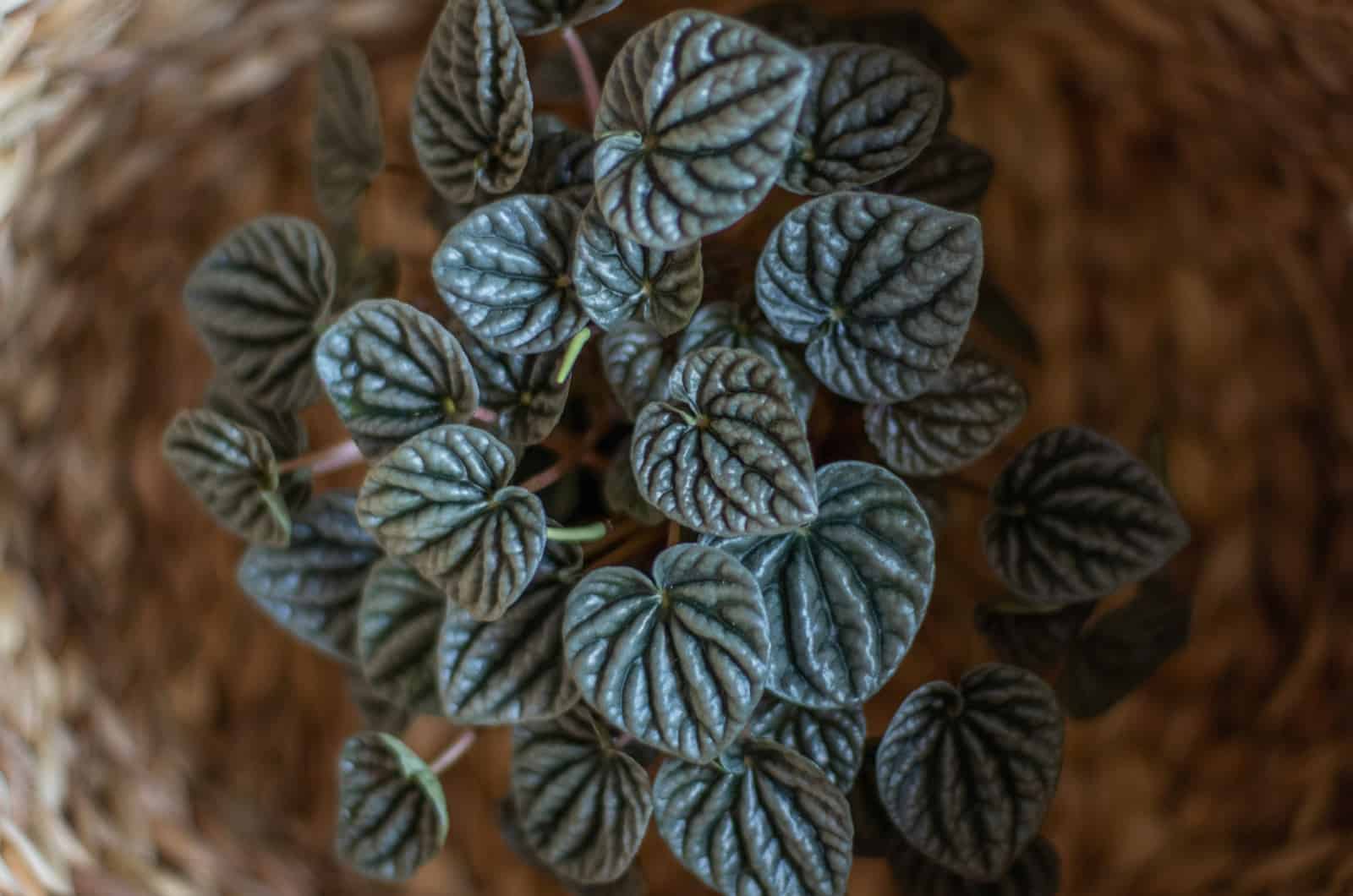
The Peperomia caperata ‘Frost’ is a tropical plant that enjoys high humidity levels. However, it is a succulent-like plant due to its fleshy and thick leaves, so it can adapt to moderate humidity levels.
The great thing is that you can increase the humidity in so many ways, so there’s no need to test if the plant grows well in lower humidity.
The first method to raise the humidity is to use a pebble tray. I like this method as a pebble tray is decorative and adds a final touch to the frost peperomia’s fascinating appearance.
Another method is to place this peperomia plant near other indoor plants. This way, the humidity will spread evenly. If you grow watermelon peperomia or peperomia scandens variegata, place the silver peperomia next to them; the plants will benefit and make your home look beautiful.
Misting is a quick and straightforward method of raising the humidity. Mist the leaves from time to time but remember that the leaves shouldn’t be wet for too long, as they will become susceptible to fungal infections. It’s better to leave the plant to grow in lower humidity than to deal with fungal infections.
If you want to maintain the humidity, investing in a humidifier is great.
Kitchens and bathrooms have higher humidity levels so consider placing your peperomia in these places.
Temperature Requirements
The ideal temperature for a peperomia frost ranges from 65 to 75 degrees Fahrenheit.
Although the plant grows well in lower or higher temperatures (60-80 degrees Fahrenheit), don’t let the temperature drop below 55 degrees Fahrenheit. However, you can grow this houseplant in terrariums to warm them up.
Don’t get fooled by the name peperomia frost; this houseplant isn’t frost-tolerant (how ironic).
On the other hand, your peperomia will need more water if the temperature goes over 80 degrees.
People in USDA hardiness zones 10 through 12 can grow a peperomia frost outside because it can endure these conditions all year if its other growth parameters are met.
If you live in colder climates, I suggest moving the plant indoors during the winter months.
To avoid temperature shock and cold drafts, keep the Peperomia away from heating sources, vents, and air conditioners.
Soil Requirements
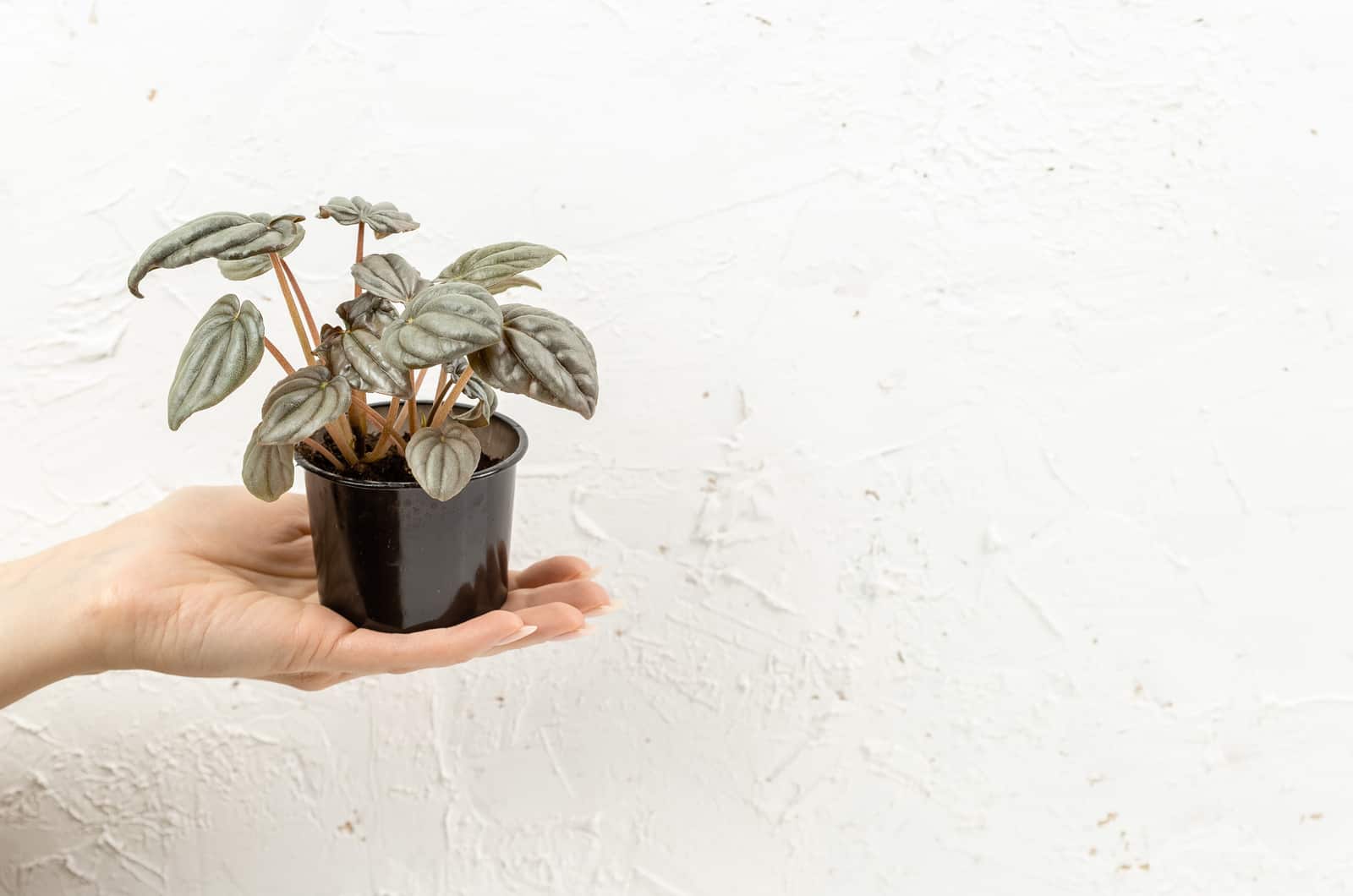
The better the potting mix, the healthier the plant.
I suggest you choose a potting mix that meets the following requirements.
• It has to be well-draining to prevent root rot.
• Well-aerated; the roots should breathe.
• Moderately moist.
• Slightly acidic; a pH ranging from 6 to 6.6. However, these peperomias can survive various soil types ranging from neutral to slightly alkaline, as long as they are well-draining.
Peperomias are epiphytes, which means they grow on trees and don’t have access to ground soil; they uptake the nutrients from bark debris or rotting leaves, rocky crevices, etc. The best method is to ensure a potting soil-less potting mix.
A mixture that includes potting soil is not an option. It is compact, and a frost peperomia requires a well-aerated potting mix. If the airspace gets clogged, the roots will suffocate due to the low oxygen presence.
Mix 2/3 peat moss and 1/3 perlite, pumice, or sand; the peat moss will keep the soil moist and the perlite, pumice, or sand will ensure good drainage, and add some gravel to promote aeration.
Soil mixes containing materials that retain water for a more extended period aren’t an option, as they can encourage root rot and kill the plant.
Watering
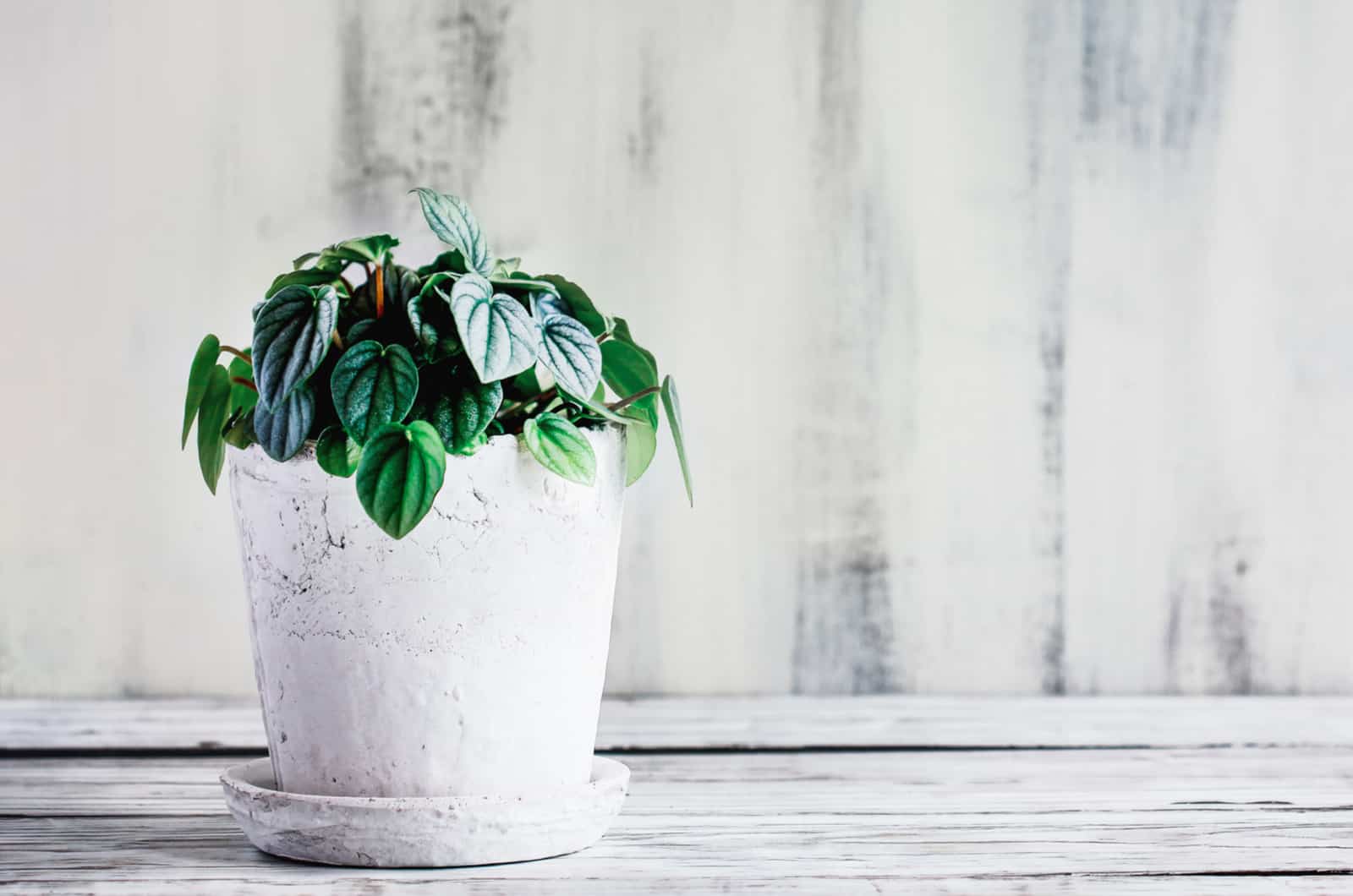
The frost peperomia requires moderate moisture amounts. Ir requires more water during summer and spring (growing season) and less water in winter (dormancy).
This plant doesn’t require much water as it has succulent features and its leaves have the ability to store water. Therefore, overwatering will cause more damage than underwatering.
However, an underwatered peperomia can also suffer from damage, so following the watering schedule is best.
Let’s see how to avoid both conditions!
Watering Schedule
The general rule is to water this peperomia every 8 to 10 days.
However, this may depend on the conditions you provide and the climate you live in.
For example, if you live in warmer climates and grow this plant outdoors, you’ll have to water it more often. The same applies to warmer climates with low humidity.
The best option is to wait for the soil to dry out between waterings. Don’t let the soil dry out completely, but instead wait until 70-75% of the soil is dry.
What Is The Best Way To Water A Peperomia Frost?
When you notice that a few inches of the soil have dried out, it’s time for watering.
Take a watering can and pour the water onto the topsoil gradually.
The soil should be wet but not soggy; water the soil until you see the excess water coming out from the drainage holes.
Overwatering vs Underwatering
Look at the table to see the differences between an overwatered and underwatered frost peperomia houseplant.
[table id=136 /]Fertilizing
This peperomia isn’t a heavy feeder; however, it will benefit from occasional fertilizing.
You can choose between chemical or organic fertilizers.
If you decide on the chemical version, use an all-purpose houseplant fertilizer but dilute it to half strength. Higher concentrations of nitrogen, phosphorus, or potassium can burn the root system.
Avoid fertilization when you water the plant. Apply fertilizer once a month during the growing season (spring and summer).
Peperomias enter dormancy during winter, which means they don’t grow actively during this period. Therefore, don’t fertilize the plant during winter.
If you prefer organic fertilizers (like myself), add rich organic manure to the soil.
Pruning
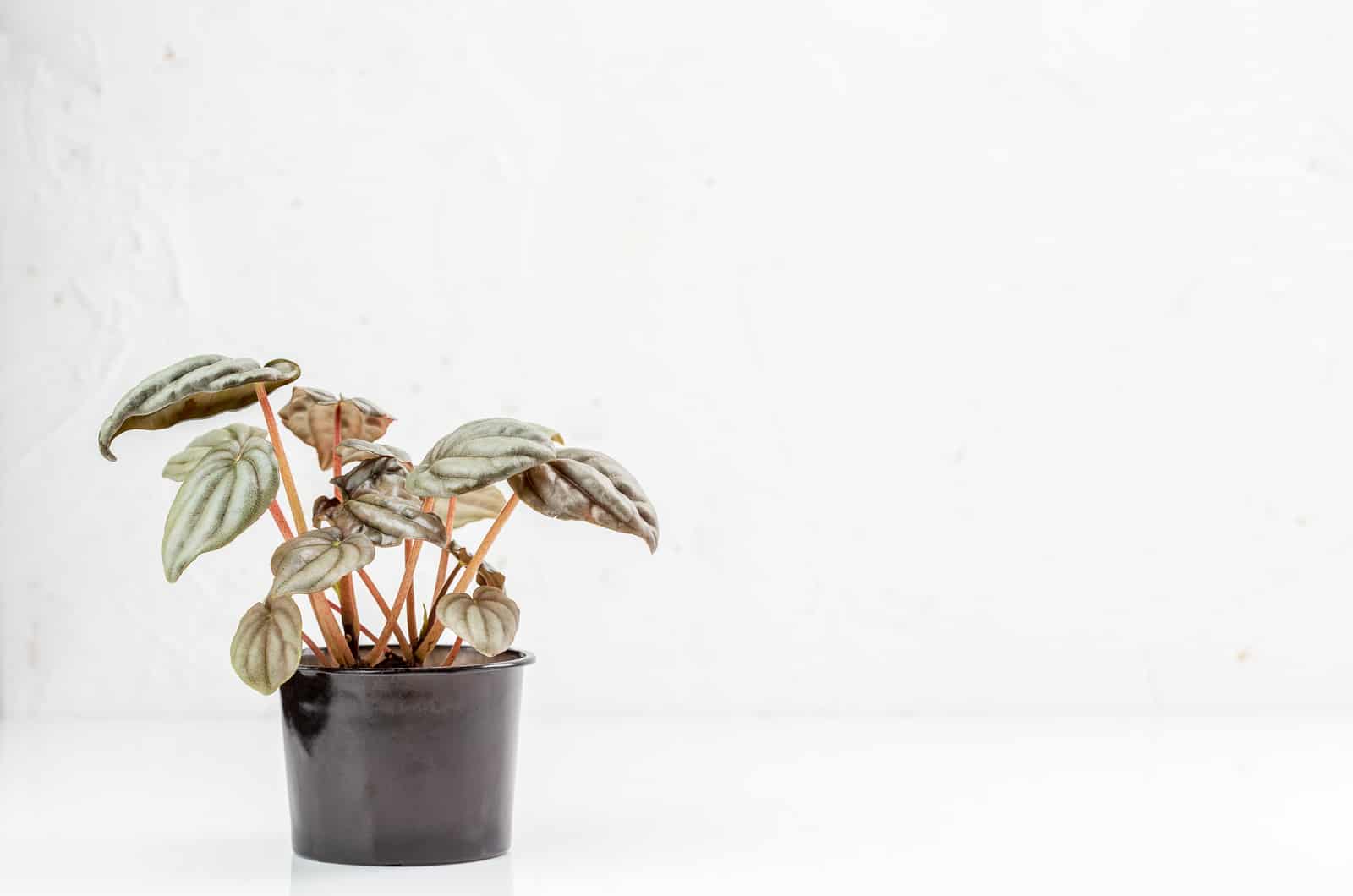
This peperomia doesn’t require much pruning. If you notice yellow, dry, or withered leaves, remove them using a sterilized pair of scissors.
You can also remove the flower spikes after blooming by cutting them near the base. This will allow the plant to bloom again and redirect its energy elsewhere.
Feel free to prune this peperomia plant if you have a specific shape in mind. Always use sharp pruners, as you don’t want any unattractive branches to ruin the beauty of the heart-shaped leaves.
Cleaning
Don’t forget to clean your peperomia!
To maintain the beauty of the leaves, remove the dust from time to time.
Just dip a soft sponge in water and gently rub the leaves.
Wear gloves when cleaning this peperomia plant as its toxicity can severely affect you.
Repotting
This houseplant is a slow-growing peperomia cultivar, so it doesn’t need repotting often.
The general rule is to repot it every 2-3 years, and that’s also how long it takes for the plant to double in size.
The size is the indicator for repotting. However, if you notice that your frost peperomia has become rootbound, repot it. Luckily, this isn’t the case very often.
Before repotting, prepare a new pot slightly larger in size, as too much soil surrounding the roots can increase its susceptibility to root rot.
Also, prepare a fresh potting mix to avoid contamination.
The best time to repot this peperomia is at the start of the growing season (early spring). This way, the plant will have more time to adapt to the new pot and soil.
Let’s see the benefits of repotting.
• Repotting promotes growth.
• Prevents the plant from becoming rootbound.
• Decreases the need for fertilization, as fresh potting mix contains nutrients.
• Decreases its susceptibility to diseases.
Here’s a video on peperomia frost care:
Peperomia Frost Plant Propagation
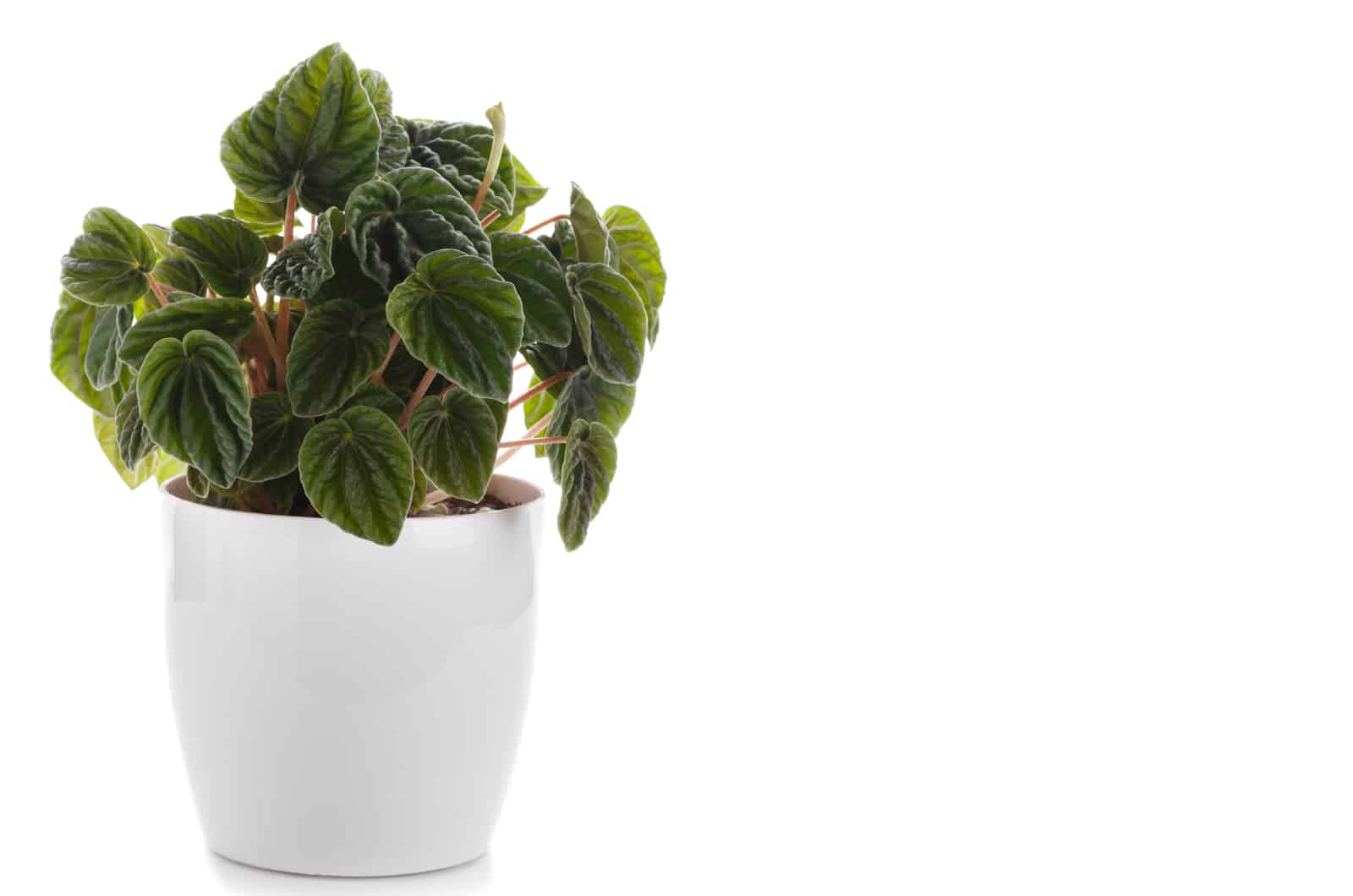
Propagating a frost peperomia shouldn’t be a problem, as you can choose between 2 methods. Each method rarely fails, so whichever you choose, you can get a new plant to add to your plant collection or gift it.
Before propagating, prepare gloves, a sharp and sterilized pair of scissors or pruners, potting mix, a germination tray, and a transparent polythene bag (optional).
Let’s start!
By Leaf Cuttings
One of the most effective methods to propagate this peperomia is to use leaf cuttings. I have to mention though, that propagation from leaf cuttings may lead to the loss of variegation.
If you use green leaves, you won’t get variegated plants, so make sure that the leaves are variegated before you start cutting them.
Here are the steps.
1. Using a sterilized pair of scissors (use 70% isopropyl alcohol or bleach for sterilization), cut a few leaves and a petiole from the mother plant.
2. Allow the cuttings to callus for a day.
3. Fill the germination tray with 1/2 peat moss and 1/2 perlite and place the leaf cuttings in; make some space between the cuttings; 4 inches should be enough.
4. Press the leaf into the soil to keep the stalk firm.
5. The veins should be in contact with the soil, so you can insert hairpins through the leaf.
6. Place the germination tray at 70-75 degrees Fahrenheit under a grow light and mist the soil occasionally. Mist the plant or cover it with a polythene bag.
7. You can expect the new plants to grow from the leaf base in a month or two.
By Stem Cuttings
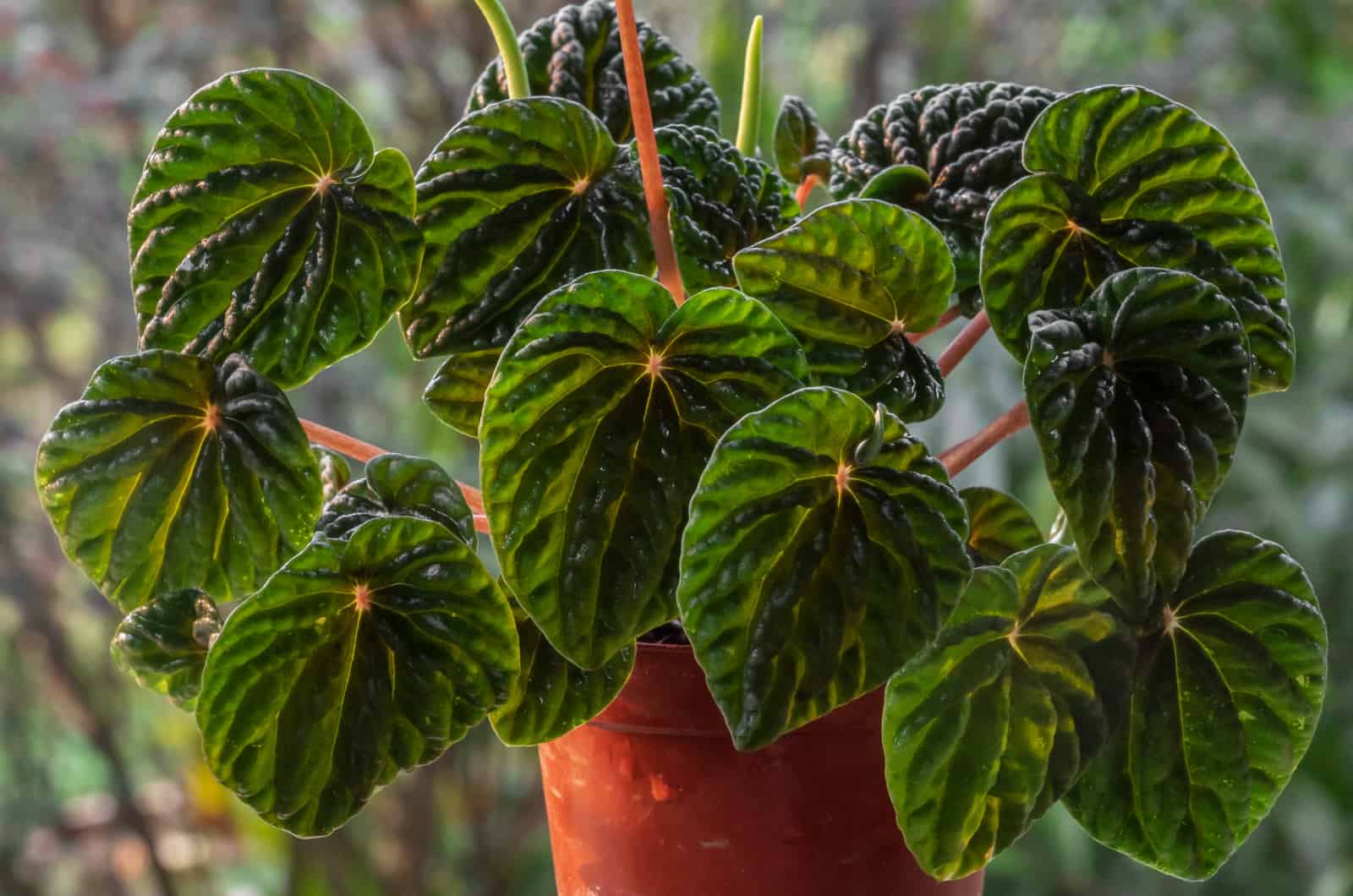
Propagation by stem cuttings is a great method for beginners, especially if you decide to propagate the stem cuttings in water.
I’ll teach you how to propagate the cuttings in both soil and water, but first, let’s see how to take the stem cuttings.
• Inspect the mother plant to find a healthy stem, it should have at least 2 leaves attached.
• Cut the stem to about 3-4 inches.
• Allow the cuttings to callus for a day.
Now it’s time to put the cuttings in the medium.
Stem Cuttings In Soil
1. Fill the potting medium with one part peat moss and one part perlite.
2. Put the cuttings in the soil.
3. Place the pot in bright indirect light and ensure the same temperature during germination.
4. You can expect the roots to sprout in a month or two.
Stem Cuttings In Water
1. Fill a jar with water.
2. Immerse the cuttings but make sure the leaves aren’t in touch with water as they could rot.
3. Place the jar in bright indirect light.
4. Change the water regularly.
5. The roots will sprout in about a month. Then it will be time to transplant your new peperomia caperata’ frost.
Common Problems
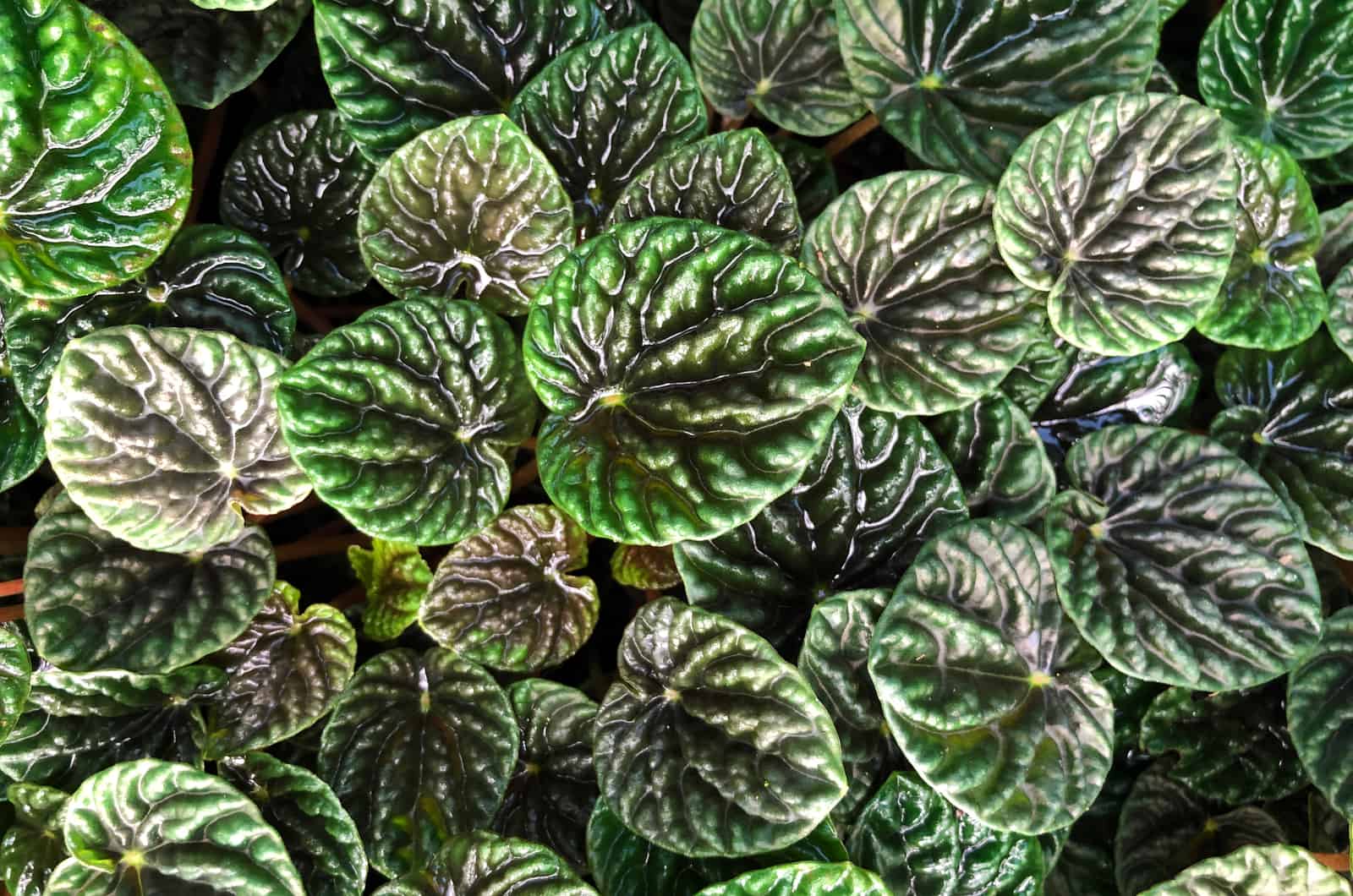
The silver peperomia isn’t prone to pests and diseases, but they may still occur.
If you don’t provide the plant with the conditions it requires, this could affect its appearance.
Let’s get into the details!
Pests
This peperomia has fleshy stalks and may become a target for sap-sucking pests and bugs. Pests like mealybugs, scales, spider mites, or fungus gnats are the most likely to inhabit the plant’s leaves or stem.
If you notice white, honeydew mold on the leaf axils, your plant has been invaded by mealybugs. If you don’t react immediately, your frost peperomia will grow slower, start wilting, and eventually die.
Get rid of the mealybugs by rubbing the leaves with alcohol or neem oil.
If you notice brown bumps on the leaves, honeydew, and poor growth, the unwanted guests are scales.
Use horticultural oil spray or insecticidal soap to remove scales.
If you notice whitish or yellowish spots on the leaves, blame spider mites. They leave silky webbings on the edges of the leaves.
Put your silver peperomia in the sink and shower the leaves. Rub the leaves with neem oil or use insecticidal soap if that doesn’t work.
Small, black flies known as fungus gnats can invade this peperomia and cause poor growth, yellowing, leaf drop, wilting, and poor growth.
Fungus gnats prefer water so if you spot any, reduce your watering and improve the air circulation.
Diseases
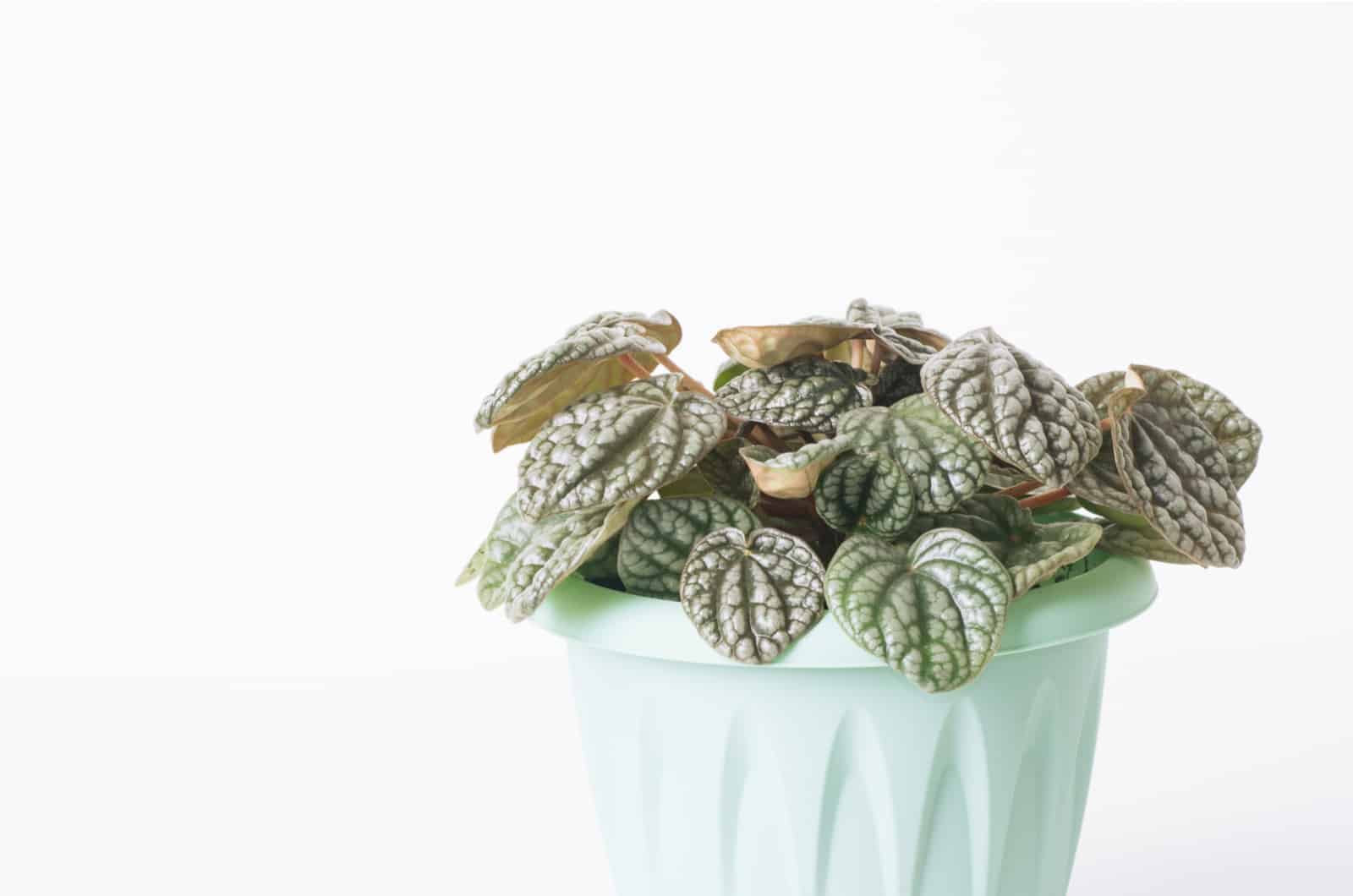
The most common disease that can affect your peperomia frost is root rot.
If you notice wet soil and a foul odor, take the houseplant out of the pot and inspect the roots.
Brown or black, mushy roots are indicators of root rot. Remove all the roots that look unhealthy using a sterilized pair of scissors, and repot the plant afterwards.
Brown Spots On The Leaves
The leaves will have brown spots if the plant suffers from a fungal infection.
High humidity and overwatered soil attract fungi and make a great environment for spreading the infection.
Isolate your silver peperomia and cut off the leaves with brown spots using a sterilized pair of scissors.
Leaves Turning Yellow
The leaves are most likely to turn yellow if the soil can’t provide enough nutrients for the roots to transport the nutrients to the leaves.
Overwatered soil will clog the air spaces, causing the leaves to turn yellow.
It’s uncommon, but high humidity can also be a reason why the leaves turn yellow.
Adjust the humidity and watering; let the soil dry out if it is too wet. Please don’t put this peperomia in direct sun to dry it out as this will cause even more damage.
Curling Leaves
It may be hard to determine what caused your silver peperomia’s leaves to curl—improper watering, high humidity, high temperature, over-fertilization, nutrient deficiency, or bugs.
Don’t worry though; you still have enough time to save the plant. Inspect the plant to see if any other parts have suffered any damage. If not, adjust the conditions and give the leaves some time to recover. In the meantime, pay attention to your plant care, water it regularly, and feed it if necessary.
Leaf Burn
There are three possible reasons for leaf burn.
The first one is direct sunlight. Remove the affected leaves and find a new place for your silver peperomia.
It may seem helpful, but adding too much fertilizer can cause severe damage. The first sign of overfertilization is leaf burn. Dilute the fertilizer before applying it and only feed the plant once a month during the growing season.
If the water you use for your peperomia contains harmful chemical salts (check for white deposits), start using reverse osmosis water. You can also prevent chemical salts from building up by drenching the soil with water.
FAQs
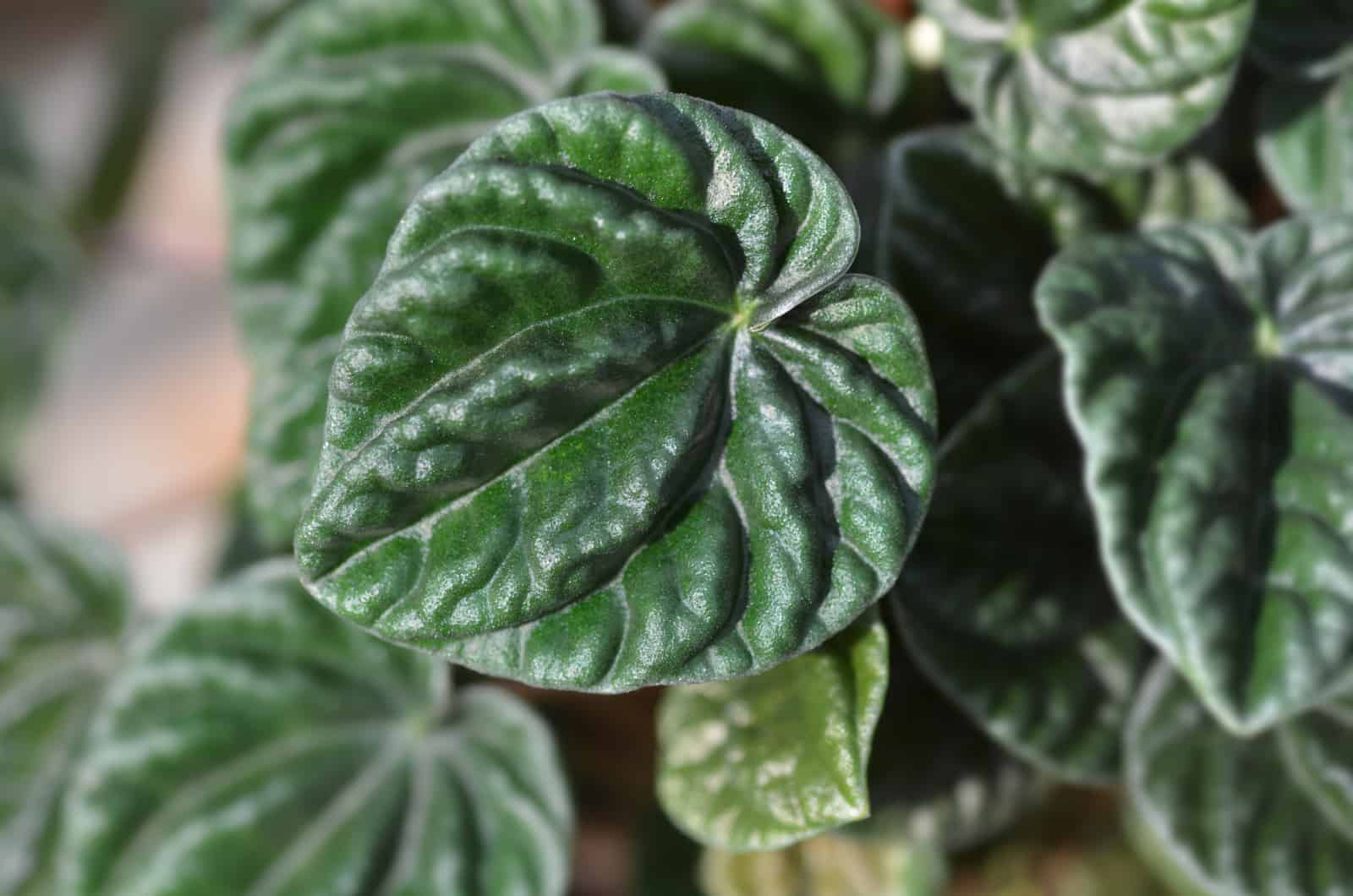
Is a Peperomia frost a succulent?
A Peperomia frost isn’t a succulent, but they share similar features, so we often say that a frost peperomia is succulent-like. Both plants are low-maintenance and have fleshy leaves that can store water, which means that the plants can be easily overwatered.
Succulents are drought-tolerant, but frost peperomias can’t survive without water; succulents’ soil should dry out entirely between waterings, which is not the case with this peperomia.
Succulents thrive in low humidity, but the silver peperomia requires moderate humidity levels to grow healthily.
What are the benefits of the Peperomia frost?
According to NASA research, a peperomia frost’s leaves are air purifiers, which decrease the level of formaldehyde by 47%. A significant portion of indoor air contains this substance, so growing the silver peperomia can be helpful.
What is the average height of a Peperomia Frost?
The Peperomia frost, scientifically known as a peperomia caperata ‘frost, can grow up to 6-12 inches tall and 6-12 inches wide. This plant is a herbaceous perennial epiphyte and will take more time to reach its mature size when compared to the other most common houseplants.
Wrapping Up
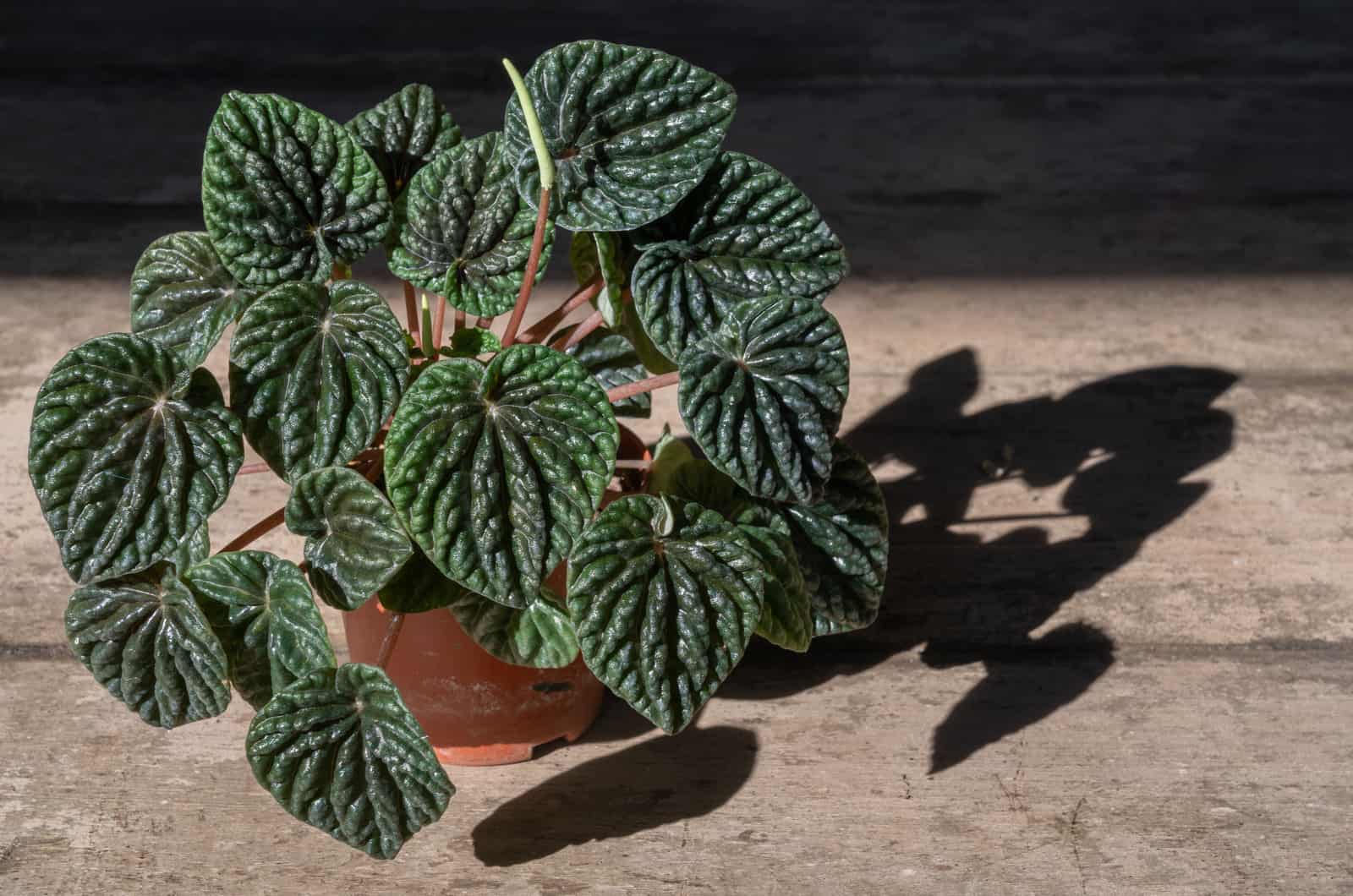
Fascinating silver heart-shaped leaves with dark green veins deserve to be well-maintained.
We’ve provided you with tips for peperomia frost care. All you need to do is apply them, and your silver peperomia will thrive like never before.
Don’t worry if some problems occur; now you’ll know how to deal with them.
Enjoy growing, propagating, and caring for one of the most beautiful cultivars from the Peperomia genus.
Until next time!
Like this post? Share or pin it for later!
